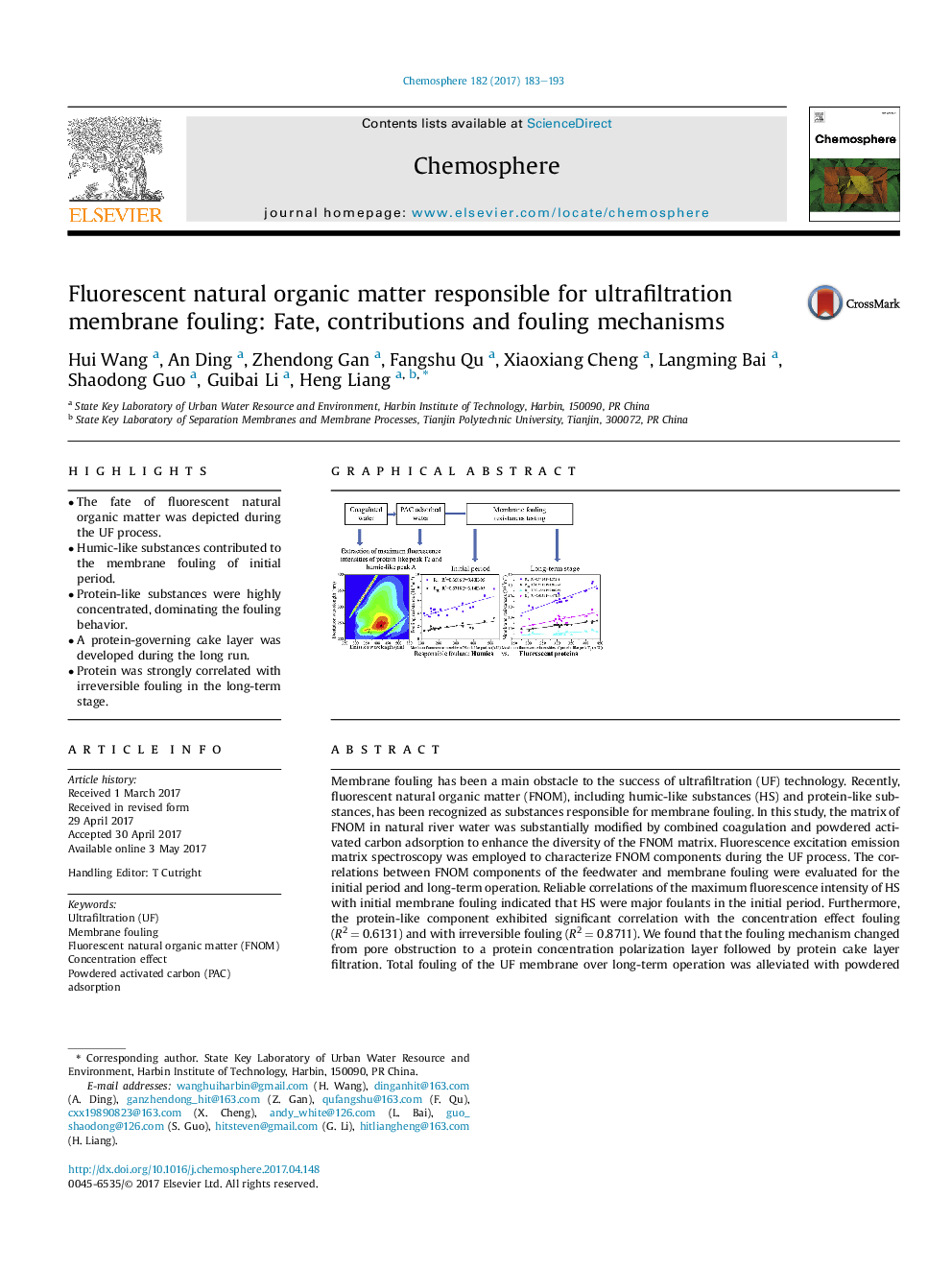| Article ID | Journal | Published Year | Pages | File Type |
|---|---|---|---|---|
| 5746943 | Chemosphere | 2017 | 11 Pages |
â¢The fate of fluorescent natural organic matter was depicted during the UF process.â¢Humic-like substances contributed to the membrane fouling of initial period.â¢Protein-like substances were highly concentrated, dominating the fouling behavior.â¢A protein-governing cake layer was developed during the long run.â¢Protein was strongly correlated with irreversible fouling in the long-term stage.
Membrane fouling has been a main obstacle to the success of ultrafiltration (UF) technology. Recently, fluorescent natural organic matter (FNOM), including humic-like substances (HS) and protein-like substances, has been recognized as substances responsible for membrane fouling. In this study, the matrix of FNOM in natural river water was substantially modified by combined coagulation and powdered activated carbon adsorption to enhance the diversity of the FNOM matrix. Fluorescence excitation emission matrix spectroscopy was employed to characterize FNOM components during the UF process. The correlations between FNOM components of the feedwater and membrane fouling were evaluated for the initial period and long-term operation. Reliable correlations of the maximum fluorescence intensity of HS with initial membrane fouling indicated that HS were major foulants in the initial period. Furthermore, the protein-like component exhibited significant correlation with the concentration effect fouling (R2Â =Â 0.6131) and with irreversible fouling (R2Â =Â 0.8711). We found that the fouling mechanism changed from pore obstruction to a protein concentration polarization layer followed by protein cake layer filtration. Total fouling of the UF membrane over long-term operation was alleviated with powdered activated carbon (PAC) adsorption; however, the mitigation of irreversible fouling was dependent on whether PAC adsorbed protein-like substances.
Graphical abstractDownload high-res image (310KB)Download full-size image
